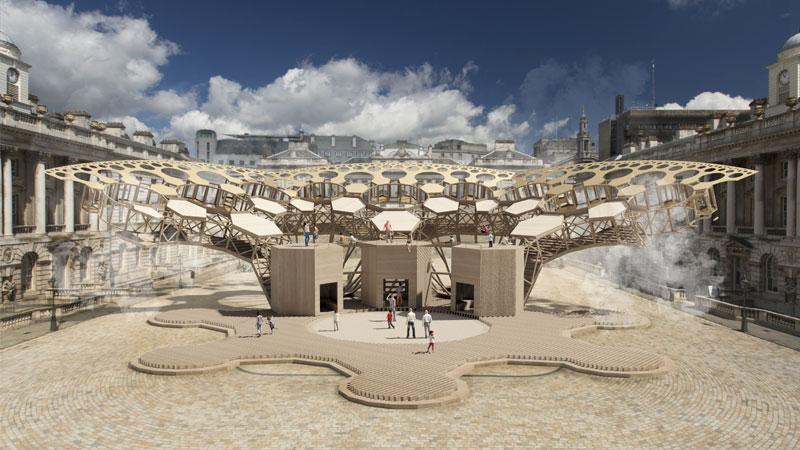Arthur Mamou-Mani, Lecturer on the Master of Architecture (MArch) (RIBA Pt II) course, has shared a live VR tour of his Catharsis amphitheatre as part of the Virtual Design Festival (VDF).

The temple, called Catharsis, was created for this year’s Burning Man festival in Nevada, US, and was developed together with Therme Art, a programme dedicated to helping artists and architects realise their large-scale, long-term art projects. When the festival was cancelled due to the coronavirus pandemic, Mamou-Mani asked game designers to help create the virtual Burning Man installation.
Catharsis is an amphitheatre made of amphitheatres in which everyone is a potential performer. The project’s geometry is based on the Poincare disk, where circles increase as they reach the infinite edge of the hyperbolic plane and would exist in a space where curves are shorter than straight lines. The seven branches will create unique universes filled with community art, as well as forming the default world around the theme of the future of our cities.
The aim of Catharsis is to activate creativity through multi-dimensional art for all senses. Drawing on the principle of radical inclusion and the traditions of Roman baths as accessible, social, and egalitarian, the project provides an open platform for all. Mamou-Mani invites sound artists, visual artists and light artists, performance art and food art to perform and place messages about the future of cities within the structure.
Mamou-Mani previously designed the main temple for the festival in 2018, called Galaxia, which was burnt down at the end of the festival as is tradition. He also shared unseen drone footage of Galaxia at this year’s Virtual Design Festival.
Instead of burning Catharsis, Mamou-Mani aims to reassemble the project in the courtyard of London’s Somerset House to establish a dialogue between cities, and for the wider community to respond to these messages.
The Virtual Arts Festival is run by architecture and design magazine Dezeen from 15 April to 30 June and brings architecture and design together to celebrate the culture and commerce of the industries, as well as explore how they can adapt and respond to extraordinary circumstances.
Mamou-Mani said about the tour: "The COVID-19 confinement made us think of alternative ways of creating spaces and experiences as architects. Virtual reality opened up a whole new world in which buildings could exist in parallel worlds. This "spatial" version of the internet is called the Metaverse. Dezeen connected us with game designers and developers of metaverses. Since then, it's been an amazing journey of discovery and I look forward to teaching this to our students next year with Toby Burgess."









